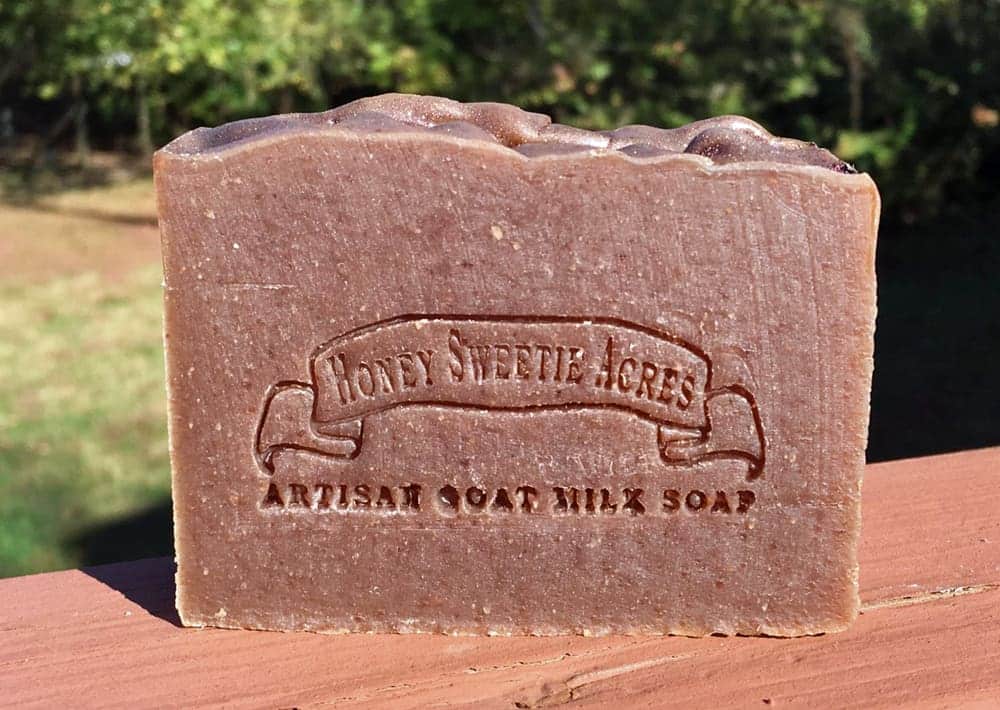A fallacy is a type of erroneous reasoning that renders arguments logically unsound. Unfortunately, there are a few fallacies out there about handcrafted goat milk soap that has people questioning if goat milk soap is actually good for you.
The blog today is to dispel some myths and provide educational detail……
Goats are dirty, smelly animals – Why would you want soap from them?
In our experience, we find goats to be one of the cleanest and pickiest of farm animals.
Goats typically detest rain with the resultant soggy ground and water puddles. They will typically stand on a large root, branch, log, board or almost any type of elevated item to escape the dampness. Goats will not typically or willingly drink from a dirty water bucket unless extreme thirst drives them to do so. Goats will not eat feed that has been on the floor. Once the grain spills or the flake of hay is stepped on, forget it…..no 3 second rule for goats.
Goats do not graze off the ground like cattle, horses and sheep. They are browsers and prefer leaves, twigs, certain weeds such as dandelions, poison ivy and honeysuckle bushes. If those are not available, they will consume the bark off of tender young trees. Goats will wipe their mouths……on you or anything close that works. They do not like milk mustaches or excess liquids or feedstuffs on their lips. Babies are especially good for wiping their mouths on your shirt and each other after finishing a bottle.
A goat “odor” is attributable only to the buck during breeding season. What we may find stinky, the female interprets as heavenly and it encourages her interest in mating. Hundreds of species of both animals and insects use scent to attract their mates.
I can smell the goat milk in the soap..
This is the one really gets my goat! (ha ha!). Biologically and chemically, it is physically impossible under the processes that are used. The saponification process (converting oils and fats to soap) changes the chemical composition in its entirety.
For any odor to begin, bacteria would have to gain a foothold and proliferate. For those of us who make goat milk soap from real milk, sanitation and quick chilling the milk is of the utmost importance. Milk is a perishable product, however experienced owners know that the milking regime must be intensely clean and all equipment sanitized after each and every milking, (especially if you drink raw milk like we do).
We shave each doe’s udder clean of hair using a surgical 50 blade. We then wash the udder thoroughly before and after each milking. Milking is done into sanitized stainless steel, run through high pore filters and flash chilled in icy water and then frozen. A multi-step process is used to clean up afterwards using a special dairy soap and an acidic rinse to remove any remnants of milk protein, calcium and magnesium. This is done to prevent bacteria from forming, whether the milk is used for food or soap!
Soap made with lye is dangerous.
ALL soap is made with lye, even pre-made melt & pour soap and soap bases.
Consumers do not come in contact with unreacted lye in handcrafted soap because it has only been used as a reagent. A reagent is a substance that is used in a chemical reaction to create a something new. Combining the acid (oils) with the base (sodium hydroxide) results in saponification and soap is created. Sodium hydroxide (lye) simply no longer exists in the finished soap because chemically speaking, a totally new product has been born. By super-fatting soap, a slight amount of extra fat is retained for conditioning and moisturizing. If lye was present, any excess fat would be consumed.
A customer insisted one day that she bought soap made without lye. After some discussion, it was discovered she purchased “melt & pour” (M&P) soap from a crafter. The crafter did not use lye in making her soaps, she melted a pre-made commercial bar. The customer was told that lye was not used, which was true, but only half-true. The crafter did not personally use lye, however lye WAS used to manufacture the base that she used for her soap. This is a very important distinction between M&P soap and cold/hot process soap making.
Handcrafted Soap does not last.
It is important to understand how handcrafted soap is made when comparing it to the commercial soap that most people are familiar with. Commercial soaps contain artificial hardening chemicals, salt, synthetic waxes and even excess sodium hydroxide in minute amounts, all of which are meant to encourage a long shelf-life. These additions are why commercial bars are also drying and leave the skin feeling drawn and tight.
Natural soaps are normally slightly softer than commercial soaps because they retain natural glycerin which is a byproduct of the soap-making reaction. Glycerin is removed in commercial soap because it has a high value to the pharmaceutical industry.
By it’s very nature, handcrafted soap typically does not last quite as long as a commercial bar of soap. The life of the bar depends on a myriad of things such as the ingredients used, the balance of hard vs soft oils, aging time and conditions, water or botanical content, and anti-oxidants used during production. We use “softer” oils to superfat our soap and a higher butterfat to create bars that have higher emollients. This method creates soap that soothes, softens and leaves the skin feeling moisturized.
How long a bar will last obviously depends on how many people are using it and how often you bath or shower. A properly cared for bar, should last one person approximately one month.
To maximize the life of your soap, keep it in a well-drained soap dish so it can dry between uses or use one of our Soap Nets to hang the soap to dry after use! Another benefit of the soap net is that no matter how small your piece becomes, it will be held securely in the net till you use up the tiniest, little sliver.
Premium soap is an investment in the health of your skin. Here are a few tips to get the most out of your bar:
- Don’t allow soap to sit in a solid bath dish or tray after use
- Use either a well-drained dish or hang in a soap net to air dry
- Never leave soap where a water spray can hit it
- If a bar becomes gooey, set it on a draining dish to dry out thoroughly


